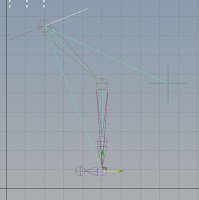Here's something recent I've been working on for a bit of fun. It's a grid system with fog of war for Unity3D. It is in its early stages at the moment, but it gives you a decent idea how some of the back-end works.
Here it is with a high cell size and a high resolution fog of war texture (for clarity of grid).
Sphere is a Unit, the big cube is a Building, and the other cubes are discoverable objects or set models that respect fog of war.
The grid is scale-able in both size (maintains cell size) and cell size (maintains size). Unity sight range and radii are based on cell sizes so they scale with cell size.
This grid will support any mesh for terrain, not just flat planes. It can also support a very high amount of cells per grid, as it is not instantiating an entire GameObject per cell. The grid lines are a simple projector, scaled to correct size, and with repeating texture.
I don't have pathing done, which will enable the unit to navigate from point A to point B by itself. So for now it just follows the mouse, at the collision point between the mouse ray and the ground.
Fog of war is computed on a per-cell basis, and upscaled to a higher resolution texture to avoid interpolation problems. In the ground shader, I simply multiply in the fog-of-war texture. In each object's shader, I check it's cell's visibility, and multiply by the appropriate tint. Simple.
I could go on and on, but I hope someone else finds this stuff interesting! I'll follow up with progress as I would like to release this for other Unity users.
-K
















